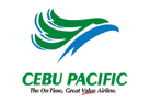
LENGUAJE Zamboangueño
(CHABACANO REAL, mas o menos)
Buenas dias! Que tal?
(Good day! How are you?)
A typical Chabacano residents use by way of greeting. With the words comes a smile and an engaging manner- "cariño" we call it, to make you feel right at home.
CHABACANO is the official language of the Zamboangueños. It's origin can be traced during the Spanish Occupation. The Spanish presence which lasted for three centuries gave birth to the unique Zamboangueño language of Chabacano. It is a Spanish patois which became the primary medium of communication.The natives adapted Spanish and made the language their own by sprinkling it with the words from the native dialects of the region. It is a primarily 70% Spanish and the remaining 30% is a mix of the primary dialects of the region- namely, Samal, Tausug, yakan, Maranao and Filipino.The Chabacano of today is not what is used to because new settlers from the other regions contributed to evolution/change of the language to how it is spoken today. The Chabacano used during the American occupation sounds loyal to the Spanish mother tongue. Peoples from the different regions of the Philippines are enchanted by the romantic quality the Spanish words give to Chabacano. But the language is not so diluted like the modern version in the outskirts of the City where modernity does not yet have a firm grip. Modern Zamboangueños who live in the City call that kind of Chabacano the "alla-alla" kind(with the third syllable spoken on a higher note). Meaning to say "from way out there"-"out there" . Lliterally, it means from the provincial Zamboanga or places outside the city. If one listens to the old kind of Chabacano spoken in places outside the city one will discover the singsong quality used in speaking the language.. Words like "columpio"(rocking chair), "coloca"(to affix ),"ambuslao"(heaped), platano"(banana) are seldom or never used at all by the modern young people. Efforts are being made to salvage what is left of the Chabacano of old. Fortunately, there are still old-timers around who can help save the language from extinction by contributing what they know of the language that was Chabacano.
CONVERSA KITA CHABACANO
- AT THE AIRPORT/PIER OR TALKING WITH A DRIVER
Please bring me/us to (name of place).
Favor lleva comigo/canamon na (name of place).
How much do you charge to (name of place)?
Cuanto tu ta cubra para na (name of place)?
Can you charge me only________?
Puede (amount) lang?
Thank you very much/ Thank you.
Muchas Gracias/ Gracias.
Please help me with my luggage.
Favor ayuda comigo con el mi carga.
Just place it/them here/there.
Pone lang conese/conesos aqui/alla.
- ASKING FOR DIRECTIONS
Can you please help me?
Puede tu favor ayuda comigo?
Where can I find (name of place/establishment)?
Donde yo puede encontra con el (name of place)?
How do I get/go to (name of place)?
Paquilaya yo guinda/anda na (name of place)?
What do I ride to go to (name of place)?
Cosa you munta para anda na (name of place)?
Can you please tell me where the (riding)terminal of (name of place) is?
Puede tu favor abla comigo donde el terminal para na (name of place)?
Can you point to me where (PLACE)is?
Puede tu insiña donde el (place) ?
Can you tell me where I can find (NAME OF PERSON)?
Puede tu abla comigo donde you puede encuntra con ( name of person)?
Can you tell me where I can find (ITEM OR THING)?
Puede tu abla comigo onde yo puede encuntra (name of item or thing)?
- BUYING SOMETHING
- INTRODUCTIONS/ GREETINGS
I-visions Multimedia
S O L U T I O N S


HOMEPAGE LOCAL GOVERNMENT DIRECTORY
TOURIST SPOTS MUSEUM@THE FORT FORT PILAR LEGEND OF THE FORT PASONANCA PARK
ABONG-ABONG PARK CESAR CLIMACO BARTER TRADE CENTER YAKAN VILLAGE
STA. CRUZ ISLANDS LA VISTA DEL MAR ZC GOLF COURSE ZAMBOANGA BEACH PARK RT LIM BOULEVARD
CAWA-CAWA CARAGASAN REGATTA DIA DE ZAMBOANGA CUSINA CHABACANO
CONVERSA CHABACANO HOTELS RESTAURANTS TRANSPORTATION NOVELTY ITEMS PHILIPPINE NATIVE PRODUCTS
